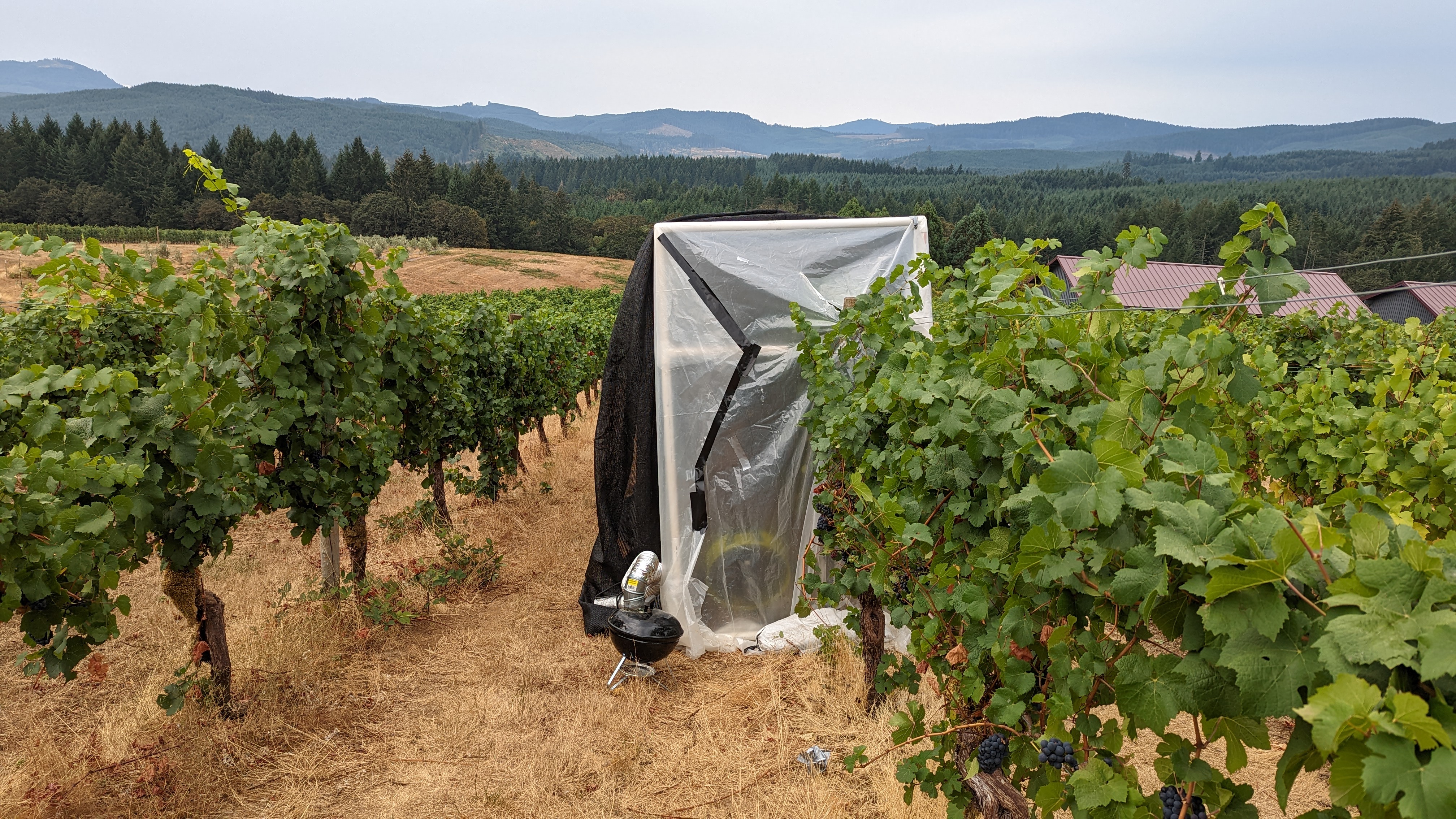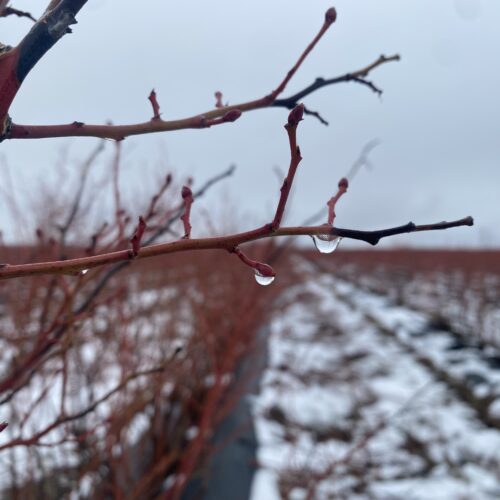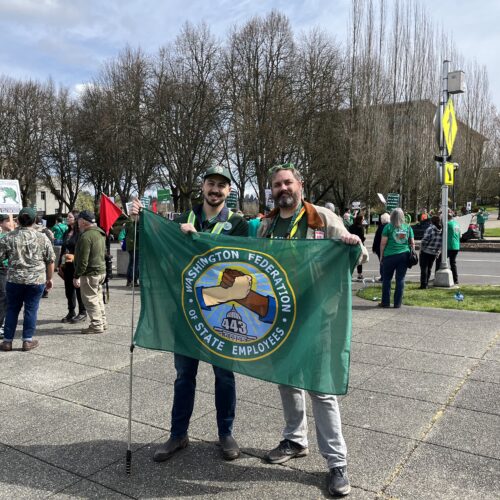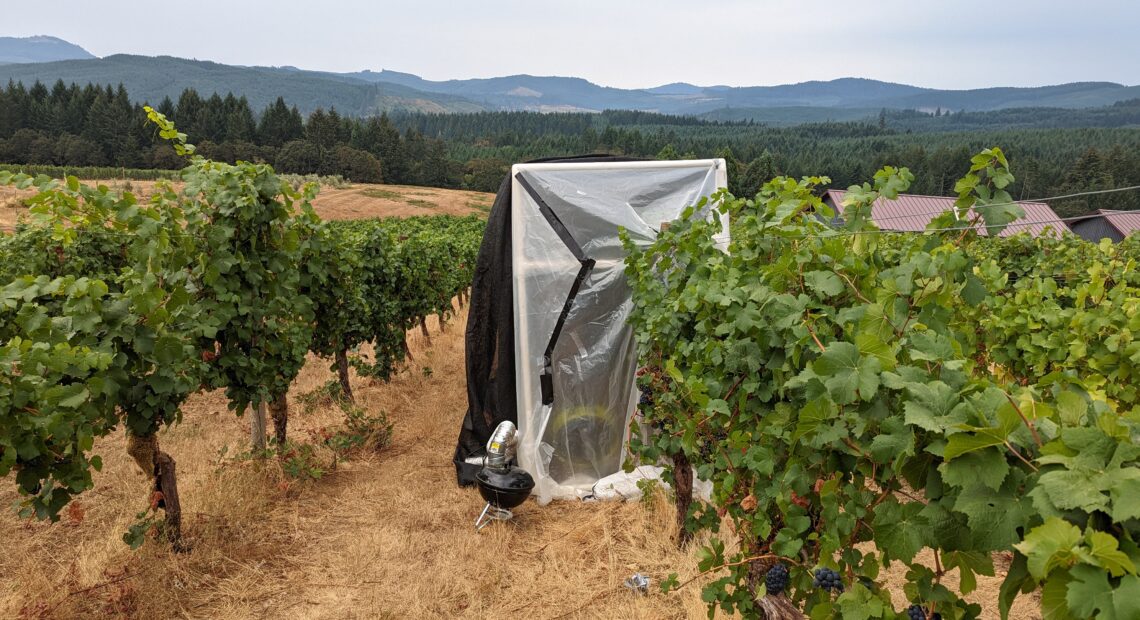
Oregon researchers hope to provide new tools to help wine growers address climate change, smoke
Listen
(Runtime :54)
Read
Researchers are developing special coatings to protect Northwest wines from any smoke flavors.
Vineyard managers could spray the coatings onto their grapes to protect the fruit from any smoke flavors. Oregon State University researchers are developing the new coatings.
With climate change, wildfires in the West are expected to become more common. Those smoky flavors can get inside the grapes and into your wine. It’s not something that can be rinsed off easily: the smoke flavors actually bond to the skins and the sugars inside the grapes.
To combat the smoke, OSU researchers sprayed grapes early in the season and the coatings grew with the fruit, sort of like an expanding balloon. Yanyun Zhao is an OSU distinguished university professor. She has been working on edible coating technology for two decades.
“The coating itself has to have the ability to either block or absorb the smoke phenols,” Zhao said.
Phenols, smoke compounds responsible for some nasty flavors, can then be rinsed off with the coating prior to crush, Zhao said.
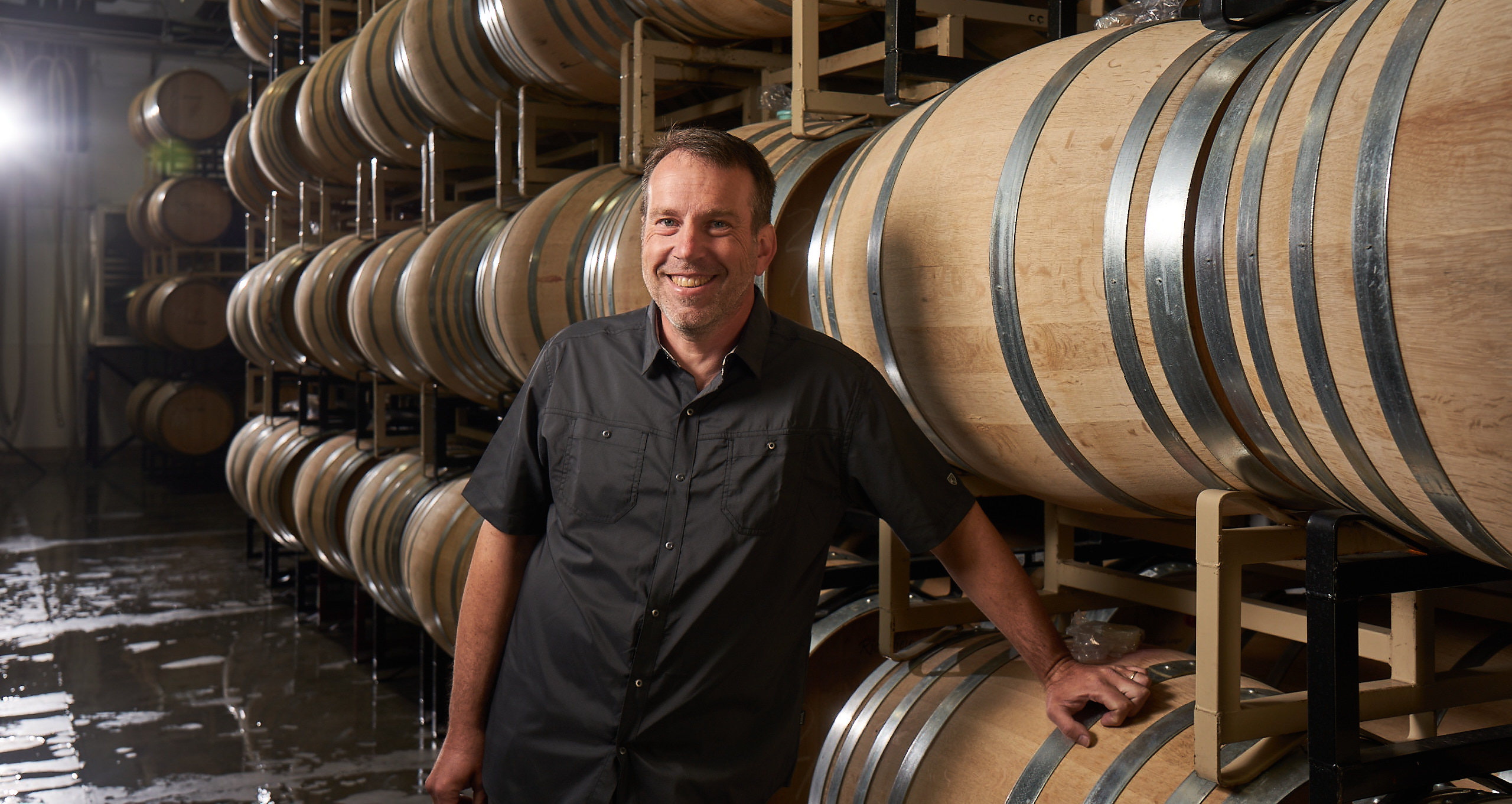
Brian Gruber rests on a barrel between vintages at Irvine & Roberts Vineyards in Ashland, Oregon.
(Credit: Gregor Halenda)
Smoky Economics
The overall impact of smoke on wines in Oregon curtailed the industry by more than 20% in overall economic impact in 2020, according to a report commissioned by the Oregon Wine Board.
Brian Gruber is the winemaker and winegrower at Irvine & Roberts Vineyards, in Ashland, Oregon, and the immediate-past president of the Oregon Winegrowers Association.
“Yes, it’s a challenge, but on the whole I think we’re making world class wines year after year,” Gruber said. “In the rare instance where we have smoke and it does impact us we have tools and ways to mitigate the smoke.”
Some tools Gruber has used in the past include: Adjusting the picking time, shortening the skin fermentation, pressing the grapes more gently, and using less-toasted barrels, he said.
Smoke flavors in wine are almost discovered vineyard by vineyard, Gruber said, and wine by wine. They can’t all be lumped together.
“As winemakers we have a brand and a reputation,” he said. “In that very rare case that everything we did couldn’t make the wine that we wanted to make – then we wouldn’t release it.”
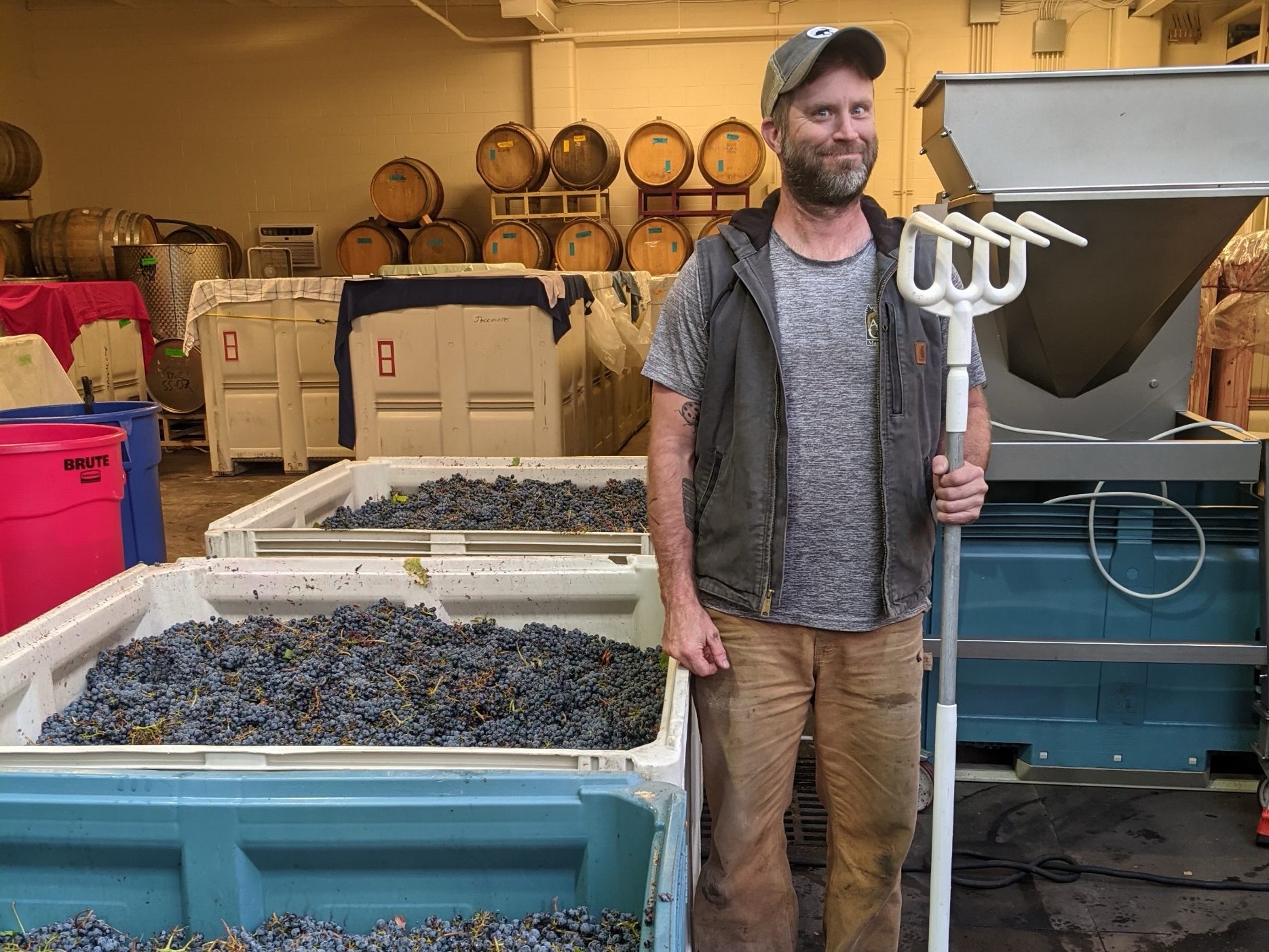
Corey Schuster during the 2021 harvest in a Portland, Oregon, winemaking facility. (Courtesy: Corey Schuster)
Rosé-color in the glasses
Some winemakers are combating smoke flavors by making wines that require a lot less grape-skin contact, like lighter rosé wines.
By pressing gently and extracting less color and tannins from the skins the wine also doesn’t have as much time to absorb the smoke-flavor phenols.
Other winemakers say they are really looking for long-term solutions where they can continue to make extracted red wines, just without the smoke.
Corey Schuster, 48, is the owner and winemaker of Jackalope Wine Cellars in Portland.
He said he’s been dealing with some smoke since about 2014 in the vineyards where he sources his fruit. He said the grapes often reach their peak ripeness and flavors about the time that wildfires in the West rage – August and September.
“It’s always kind of heartbreaking,” Schuster said. “Especially in years when the fruit is beautiful, like in 2020 when the fruit is great, it looks great, and it tastes great.”
In 2020, he didn’t take some of the fruit in Oregon that he’d contracted. He and the vineyard owner worked out a deal to not spend the labor to pick it because it was too smoke affected.
He also had to buy some Washington fruit to blend away any smoke flavors that might still pop up in the wine later.
In addition, to avoid the smoky flavors, he made a lot of rosé, which was very popular with consumers at that time.
“It was a happy coincidence,” Schuster said.
It also was a marketing challenge, he said, since many wineries made rosé in greater quantities.
For his part, Schuster said he’s not sure about a grape coating sprayed months before smoke hits.
He wants as little on the grapes as possible come harvest, but he said, the smoke keeps coming.
“I don’t see smoke becoming less of an issue,” he said. “With climate change, we have to figure something out.”
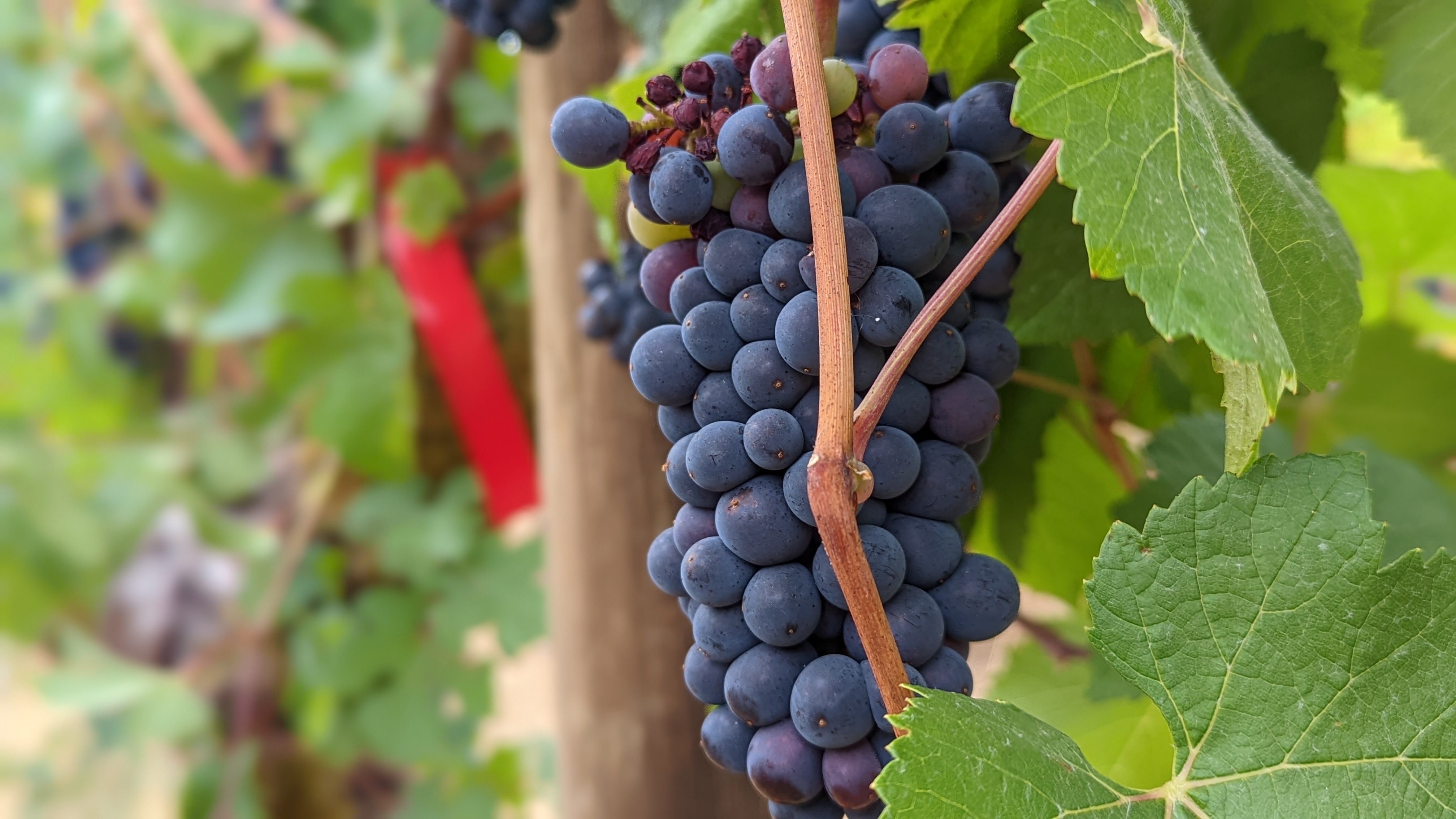
Pinot noir grapes at Oregon State University’s Woodhall Vineyard. (Credit: Sean Nealon / OSU)

